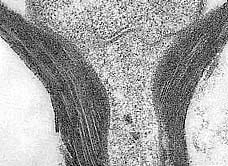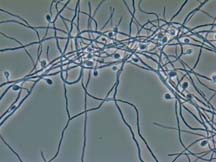
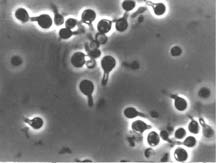
Frankia CcI3 with vesicles (Phase contrast) (Benson, Bourret, Harriott-Sims, 2003)
Vesicles isolated from sucrose gradient (Noridge & Benson, 1986)
All Frankia strains tested make "vesicles" in N-deficient culture, and often in symbiosis. Vesicles are lipid-encapsulated, roughly spherical cellular structures that measure between 2 to 6 μm in diameter. They are attached to hyphae by a short vesicle stalk that is also encapsulated. Vesicles contain nitrogenase and ancillary enzymes.
Vesicle Envelopes
Vesicles have a laminated lipid envelope (Lamont et al., 1988; Torrey and Callaham, 1982). The number of laminae is correlated with the pO2 of the surrounding medium (Parsons et al, 1987). The layers are extracted during fixation for TEM, leaving a "void area" (Lalonde et al, 1976) but they can be visualized by permanganate fixation (Harriott et al., 1991). Each layer is about 4 nm thick. Isolated vesicle envelopes are comprised primarily of hopanoid lipids (Harriott et al, 1991; Berry et al., 1993).
Bacteriohopanes play a role in membrane stability and fluidity (Demel et al, 1976; Kannenberg et al., 1980). In Frankia vesicles, they may limit O2 diffusion into the O2 labile nitrogenase.
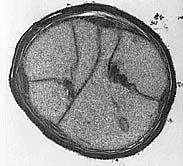
HFPCpI1 vesicle with envelope, and cross walls. (D. Benson, O. Harriot)
Vesicle stem region with lipid layers on the surface. (D. Benson, O. Harriot)
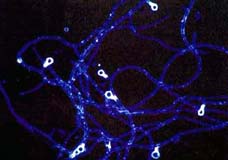
Vesicles of strain HFPCcI3- dark field (W. Silvester & R. Parsons)

Vesicles of strain HFPCcI3 germinating in medium with NH4+ (Harriott & Benson)
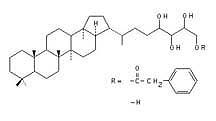
Bacteriohopane tetrol and bacteriohopane tetrol phenylacetate ester
